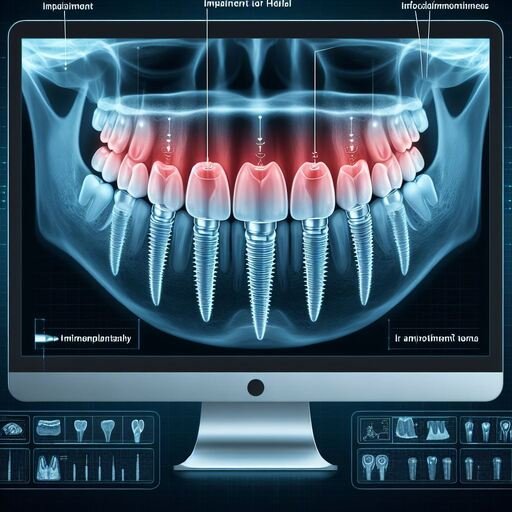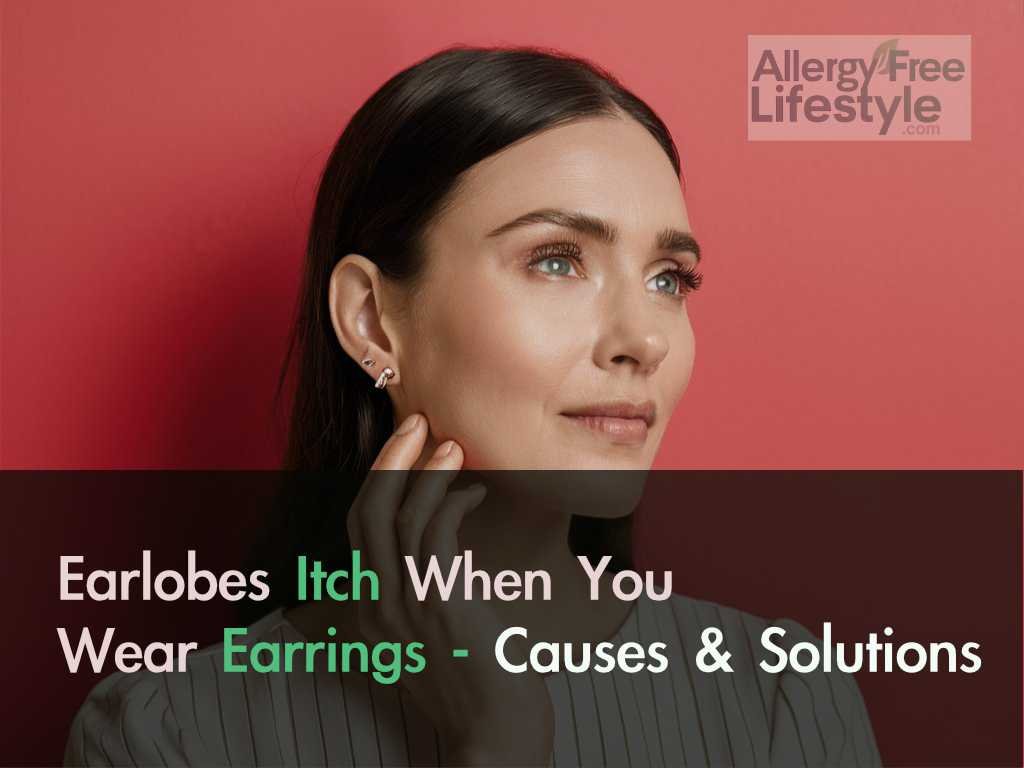Nickel allergy is indeed a real and common form of metal allergy. It’s one of the most prevalent causes of allergic contact dermatitis, which occurs when the skin reacts to certain substances it comes into contact with. Nickel is widely used in various everyday items, including jewelry, coins, zippers, cell phones, eyeglass frames, and many other metal products, making it a frequent cause of allergic reactions.
Research into allergies started in earnest during the 19th century, although humans have been experiencing allergic reactions since the beginning of humanity. Historical records from civilizations such as Ancient Rome, China, Egypt, and Greece show that allergies have been a part of human life for centuries. It’s only in the past 150 years or so, thanks to medical progress, that we’ve begun to understand them better.
According to WebMD data, one in five Americans experiences some form of allergic reaction, and an astonishing 55%(including both adults and children) of the population shows sensitivity to at least one allergen. This might seem surprising at first glance.
People with nickel allergy experience an immune response when their skin comes into contact with objects containing nickel. This reaction can lead to symptoms such as itching, redness, swelling, rash, or blisters at the site of contact. The severity of the reaction can vary depending on the individual’s sensitivity and the duration of exposure.
Nickel allergy develops after repeated or prolonged exposure to nickel-containing items. Once sensitized, the immune system reacts to even small amounts of nickel, leading to allergic symptoms upon subsequent exposures. Unlike reactions to viruses or bacteria, allergic reactions to nickel and other allergens occur because the immune system mistakenly identifies these substances as harmful, even though they’re not typically dangerous.
Preventing nickel allergy reactions involves avoiding direct skin contact with nickel-containing objects. For individuals with known sensitivities, there are nickel-free products and protective coatings that can be applied to items to prevent skin contact with nickel. Treatments may include topical corticosteroids to reduce inflammation and itching if a reaction occurs.
Given the prevalence of nickel in everyday items and the high rate of nickel sensitivity in the population, awareness and avoidance strategies are key for those affected by nickel allergy.
Nickel allergy indeed stands as the leading cause of allergic contact dermatitis (ACD), marking a significant concern due to its widespread presence in numerous everyday objects. This condition exemplifies how a seemingly benign substance can evoke a robust allergic response, leading to discomfort and skin disturbances for a substantial portion of the population.
Understanding Nickel Allergy and ACD
Prevalence and Impact: Affecting an estimated 10-30% of the global population, nickel allergy underscores a common yet often overlooked health issue. The prevalence is partly attributed to the ubiquity of nickel in our environment, including in jewelry, clothing fasteners, electronic devices, and even certain food items.
Symptoms and Diagnosis: Symptoms of nickel-induced ACD can range from mild redness and itchiness to severe blistering and skin peeling at the contact site. Diagnosis typically involves a patch test, where small amounts of nickel are applied to the skin to observe potential allergic reactions.
Management and Prevention: While there’s no cure for ACD, managing the condition focuses on symptom relief and avoiding nickel exposure. Strategies include using topical corticosteroids for inflammation, applying barrier creams, and opting for nickel-free products. Awareness and preventive measures are crucial for those sensitive to nickel, emphasizing the need for careful selection of personal and household items.
Sensitization and Reactions: Sensitization to nickel, and consequently developing ACD, results from repeated or prolonged exposure to nickel-containing materials. Once sensitized, even minimal contact can trigger an allergic response, illustrating the immune system’s heightened reactivity to this metal.
The Role of Nickel in Everyday Life: The extensive use of nickel in various industries, from fashion to electronics, due to its desirable physical properties, inadvertently contributes to the high incidence of nickel allergies. This prevalence calls for increased awareness and the availability of nickel-free alternatives to accommodate those affected by nickel allergy.
In conclusion, nickel allergy represents a significant and common trigger for allergic contact dermatitis, with a notable impact on a large segment of the global population. Understanding the sources of nickel exposure and adopting preventive measures can help manage and mitigate the effects of this pervasive allergen.
Nickel allergy is a prevalent form of allergic contact dermatitis, triggered by exposure to nickel-containing items. Here’s a breakdown of common triggers and insights into nickel’s role in both daily life and health:
Common Triggers of Nickel Allergy
Nickel is present in a wide array of everyday objects and products, making avoidance challenging for those allergic. Common sources include:
- Jewelry: Earrings, rings, necklaces, and other body adornments.
- Apparel Accessories: Eyeglass frames, bra hooks, buckles, clothing zippers, and metallic buttons.
- Household Items: Coins, keys, cookware, utensils, bathroom fittings, and furniture parts.
- Personal and Medical Devices: Phones, appliance batteries, tooth fillings, orthodontic appliances, piercings, and surgical implants.
- Cosmetics: Certain personal care such as shampoos, and makeup products can contain nickel, contributing to skin irritation.
Nickel in Food and Water
Nickel’s presence in food and water further complicates avoidance for those with severe allergies. It’s a trace element found in various foods like wheat and nuts, with the general population exposed to up to 300 micrograms per day through these means.
Regulatory Differences
The incidence of nickel allergy varies by region, influenced by regulatory standards. Europe has seen a decrease in nickel allergy occurrences due to strict regulations on nickel use in consumer products, particularly in Germany, unlike the United States, where no specific standards exist for items labeled as “nickel-free” or “hypoallergenic.”
Beyond Nickel: Other Metal Allergies
While nickel is the most common metal allergen, individuals can develop sensitivities to a variety of metals, including:
- Base Metals: Cobalt, chromium, copper, brass, and zinc.
- Precious Metals: Silver, platinum, gold, palladium, and molybdenum.
Though less common, allergies to precious metals occur, with 1-3% of people sensitive to metals like gold and platinum, compared to the higher prevalence of nickel allergy.
Managing Nickel Allergy
For those allergic to nickel, managing exposure is key. This can involve selecting nickel-free or hypoallergenic products, using protective barriers on items that cannot be avoided, and being mindful of dietary nickel intake. Awareness and precaution can significantly reduce allergic reactions and improve quality of life for those affected by nickel allergy.
Symptoms of metal allergies, including nickel allergy, are primarily associated with allergic contact dermatitis—a condition triggered by the body’s immune response to certain metal ions in contact with the skin.
Symptoms of a metal allergy typically manifest between 12 to 72 hours after initial contact with the allergen, although in cases of acute hypersensitivity, symptoms can appear within minutes.
Studies have found that between 20% and 28.5% of the global population has developed a sensitivity to nickel, with women being particularly affected; in the United States, about 36% of young women aged 18 and below are sensitive to nickel.
Wheat emerges as a prevalent source of nickel exposure through ingestion.
Here’s a closer look at the symptoms and their implications:
Localized Symptoms
The initial reaction typically manifests at the point of contact with the metal allergen. Common symptoms include:
- Red Rashes: Appearance of sunburn-like redness at the contact site.
- Itchiness: Varies from mild to severe, often increasing with continuous exposure.
- Dry, Scaly Skin: The affected area may become dry and exhibit a flaky texture.
- Cracked Skin: Prolonged exposure can lead to skin cracks, exacerbating discomfort.
- Blisters and Bumps: In more severe cases, contact with the allergen can cause blisters or bumps, which can become inflamed due to scratching.
Systemic Nickel Allergic Reaction
An intense reaction to prolonged contact with or consumption of nickel can lead to systemic nickel allergy syndrome. This condition features contact dermatitis and presents symptoms similar to those of Irritable Bowel Syndrome (IBS), including vomiting, diarrhea, headache, nausea, and fatigue. Without accurate diagnosis, systemic nickel allergy syndrome might be mistakenly dismissed as another condition.
When symptoms spread beyond the initial contact area, it’s known as a systemic reaction.
Systemic Nickel Allergy Syndrome (SNAS) represents a complex challenge within the realm of allergic responses, characterized not only by dermatological reactions typical of nickel allergy but also by systemic symptoms that can significantly impair quality of life. This syndrome is indicative of a broader sensitization to nickel, which is indeed ubiquitous in our environment, making complete avoidance nearly impossible. The management and treatment of SNAS, therefore, require a nuanced understanding of its symptomatology, diagnosis, and the therapeutic options available, particularly in terms of medical nutrition treatment.
Overview of SNAS
SNAS is marked by a systemic reaction to nickel, which can manifest through a variety of symptoms beyond allergic contact dermatitis, including gastrointestinal discomfort, chronic fatigue, and other systemic symptoms. This condition underscores the complexity of nickel as an allergen, capable of eliciting responses beyond localized skin irritation.
Diagnosis and Challenges
The diagnosis of SNAS often involves both clinical evaluation and patch testing to confirm nickel sensitivity. However, the systemic nature of the syndrome means that a multidisciplinary approach, potentially including dietary assessment and management, is necessary for effective treatment. The challenge lies in the ubiquity of nickel, presenting significant obstacles for patients attempting to navigate a nickel-saturated environment.
Treatment and Nutrition Management
Currently, there is no standard treatment protocol for SNAS, but strategies typically focus on minimizing nickel exposure and managing symptoms. Nickel-free diets are frequently recommended, yet they pose considerable compliance challenges due to the widespread presence of nickel in foods. Despite this, dietary management remains a cornerstone of treatment, aiming to reduce the body’s nickel burden and alleviate systemic symptoms.
The Role of Research and Future Directions
Despite a growing body of research, there remain significant gaps in our understanding of SNAS, particularly regarding optimal management strategies and treatment outcomes. The criticisms of nickel-free diets for low compliance highlight the need for more practical and sustainable dietary recommendations, as well as the potential exploration of other therapeutic avenues. Future research should aim to develop more standardized treatment protocols, improve diagnostic criteria, and explore the efficacy of various intervention strategies, including pharmacological options and alternative dietary approaches.
- Widespread Rashes: Rashes may cover large areas of the body, not limited to the contact site.
- Severe Itching and Discomfort: As the reaction spreads, itching can become more intense and widespread.
Chronic Symptoms and Complications
Without proper management and avoidance of the allergen, symptoms can progress to:
- Darker, Leather-Like Skin: The affected area may darken and develop a thick, leathery texture.
- Increased Sensitivity: Skin becomes more sensitive to touch and further irritants.
- Infection: Pus-filled blisters and bumps indicate infection, often due to scratching and broken skin.
Nickel in Diet
Nickel allergy can also react to dietary nickel, as many foods contain trace amounts of the metal. While avoiding nickel in the diet completely is impractical and potentially harmful to overall nutrition, individuals with severe allergies may need to modify their diet to manage symptoms.
Management Strategies
Effective management of metal and nickel allergies focuses on avoiding contact with known allergens and reducing symptom severity through:
- Barrier Protection: Using protective coverings or coatings on metal items to prevent direct skin contact.
- Topical Treatments: Corticosteroids and emollients can alleviate skin irritation and inflammation.
- Dietary Adjustments: For systemic reactions, reducing intake of high-nickel foods may be necessary, though this should be done under medical supervision to ensure nutritional needs are met.
Identifying and avoiding exposure to nickel and other metal allergens are key steps in managing allergic contact dermatitis, alongside seeking appropriate medical treatment to control symptoms and prevent complications.
Nickel allergy, particularly through dietary intake, can indeed pose significant challenges for those sensitized to nickel, leading to systemic reactions beyond the skin’s surface. Understanding which foods tend to have higher nickel content can be pivotal in managing symptoms and maintaining well-being. Here’s a concise overview:
Foods High in Nickel
- Tea and Coffee: Particularly black tea and certain coffee beans can have significant nickel content.
- Nuts and Seeds: Including peanuts, almonds, and sunflower seeds.
- Soy Products: Such as soy milk and tofu.
- Chocolate and Cocoa Products: Including bars, powders, and milk chocolate.
- Certain Fruits: Like bananas, pears, and all types of canned fruits.
- Processed and Canned Foods: Including processed meats, canned vegetables, and canned fish.
- Whole Grains and Cereals: Whole wheat products, oatmeal, buckwheat, and other whole-grain cereals.
- Certain Vegetables: Including broccoli, spinach, asparagus, Brussels sprouts, and cauliflower.
- Legumes: Peas, chickpeas, and lentils are notable examples.
Systemic Nickel Allergy Syndrome
In some individuals, ingestion of nickel-rich foods can lead to systemic nickel allergy syndrome (SNAS), which mirrors symptoms of irritable bowel syndrome, including gastrointestinal distress, headaches, and fatigue. This condition underscores the complexity of managing nickel allergies, as it involves both cutaneous and systemic symptoms.
Managing Dietary Nickel Intake
- Awareness: Being knowledgeable about which foods are high in nickel is the first step towards managing dietary intake.
- Diet Modification: Incorporating low-nickel foods into your diet and avoiding or limiting high-nickel foods can help reduce symptoms.
- Nickel Content Tool: Utilizing tools and resources that provide information on the nickel content of foods can be incredibly helpful for those looking to maintain a low-nickel diet.
- Consultation with a Specialist: For those with severe allergies or systemic reactions, consulting with an allergist or a dietitian can provide personalized advice and management strategies.
Prevalence of Nickel Allergy
Nickel allergy is one of the most common contact allergies, affecting a significant portion of the population. It’s particularly prevalent among women, with a notable sensitivity among young women and girls in the United States. This widespread prevalence highlights the importance of awareness and proactive management to mitigate the impact of nickel allergy on daily life.
In summary, managing nickel allergy, especially when it comes to dietary intake, requires a multifaceted approach that includes education, dietary modifications, and, when necessary, medical consultation. By carefully navigating the dietary landscape with regard to nickel content, individuals with nickel sensitivity can effectively manage their symptoms and maintain a healthier, more comfortable lifestyle.



